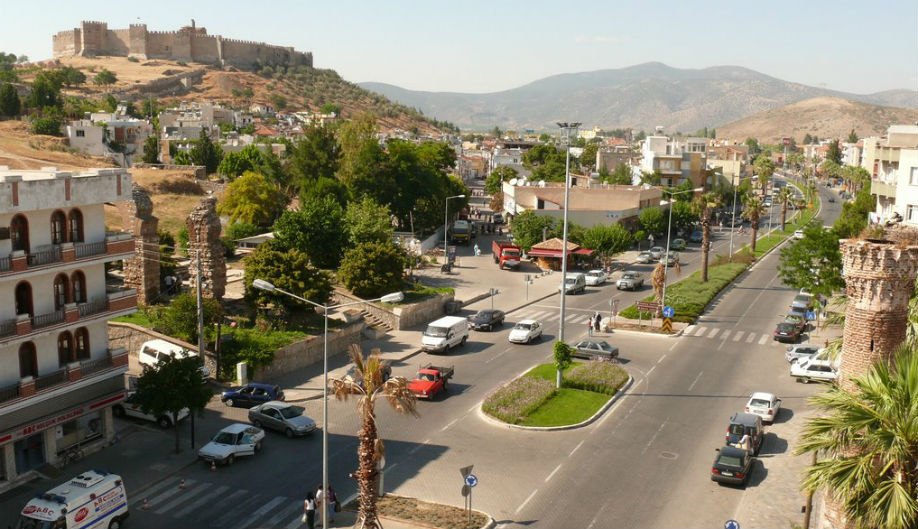Selcuk is the central town of Selcuk district, Izmir in Turkey and 1.2 miles northeast of Ephesus. Its original Greek name, Agios Theológos referred to John the Theologian. Under the Ottoman Empire, it was known as Ayasoluk. In 1914, it was renamed Selcuk after the Seljuk Turks who first led incursions into the region in the 12th century.
Throughout its long history, the town has been rebuilt so often and has changed so much that it has lost its very name. The blue and white signpost indicates Selcuk, the yellow and black Ephesus.
Mounts Pion and Koressos, Greco-Roman remains, a Byzantine basilica, and a Seljuk mosque constitute a hodgepodge of history. In the village, on the road to the ruins, is the well-laid-out museum, whose pride are the two splendidly preserved marble statues, once gilded, of Artemis in the likeness of Cybele, patroness of Ephesus, Greek in name but unmistakably Anatolian in appearance. The triple row of breasts lack nipples and have, therefore, often been held to represent eggs, the universal fetility symbol. Only the archaic smile is Greek, while the headgear the signs of the zodiac and a strange assortment of monsters on the garments is purely eastern. There is also the famous Boy on the Dolphin and a beautiful Greek mask made familiar throughout the world through photography and travel posters.
For ancient paganism as for the beginnings of Christianity, Ephesus was an important center, second only to Athens, and later, to Jerusalem. The cult of Artemis changed into the cult of the Virgin Mary, as St. Paul and St. John both preached in the town. Up to the Middle Ages, Ephesus kept its standing, owing in part to its being a well-placed port. The world’s first bank, run on the lines of today’s banks, opened here.
Selcuk is one of the most visited touristic destinations within Turkey, known for its closeness to the Ancient city of Ephesus, House of the Virgin Mary , Temple of Artemis, Cave of the Seven Sleepers, and Seljuk works of art. The 6th century Basilica of St. John the Apostle, which, some claim, is built on the site of the Apostle’s tomb, is also inside the town. The old quarter of Selcuk remains generally retaining traditional Turkish culture and locality.
Selcuk (Selçuk),



Selcuk is the closest town to ancient Ephesus. The town is located at 3 km northeast of Ephesus, 18 km northeast of Kusadasi, 7 km House of the Virgin Mary. Its name comes from the Seljuk Turks who settled in the region on 12th century. Selcuk is known for its closeness to the ancient Ephesus, House of the Virgin Mary and Seljukian works of art. The 6th century basilica of St. John the Apostle, which, some claim, is built on the site of the Apostle’s tomb, is also inside the town.
There are many hotels and small pensions located in this small town. We suggest to stay in Hotel Bella which offers all needed services with a family warmness for a moderate price.
I loved my visit to Selcuk! I had been bored with history in my school days but history really came alive in my visit to Turkish sites such as Ephesus, the underground cities and the cave houses and churches.
SELCUK MAP
View Larger Map
Selçuk
Ah, Selcuk, a nice sized town, with plenty to see & do, . I’ve been there several times, and every time I visit I am amazed at the feeling that I have just gotten home.
My first visit was a day trip to Selcuk Turkey when I was 25. We spent only a half day in Selcuk, and almost didn’t have time to visit the Ephesus. As you can see here, though, we did manage to see it and I took this lovely photo.